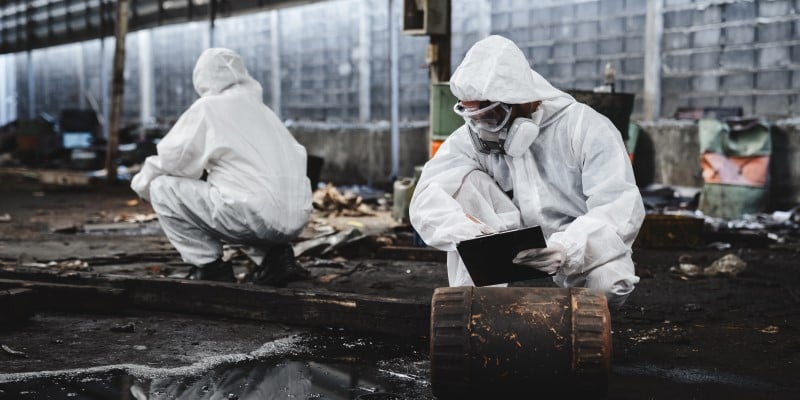 Any incident that involves the use of a chemical, biological or radiological or nuclear (CBRN) material can pose a substantial threat to not just human safety but also to the viability of a country's commercial and governmental infrastructure.
Any incident that involves the use of a chemical, biological or radiological or nuclear (CBRN) material can pose a substantial threat to not just human safety but also to the viability of a country's commercial and governmental infrastructure.
While the historical record of CBRN emergencies involving radiological or nuclear materials has so far been thankfully limited, the risk of a "low probability, high impact" event is nonetheless very real and something that must be prepared for.
Protecting critical infrastructure
For critical infrastructure - those facilities, systems, sites and services that form the backbone of a country's society and economy - the impacts of a CBRN incident involving radiological materials can be substantial.
In recent years considerable effort has been focused on developing new technological and operational solutions that can aid in the prevention and mitigation of terrorist incidents that involve the use of radioactive materials.
When preparing for the impacts of a deliberate radiological attack, there are two primary scenarios to consider - the active detonation of a radiological dispersion device (RDD) or the silent dispersion of a radioactive material within a public location.
How much of an effect either of these events will have on critical infrastructure will depend on a variety of factors - among them, the type and activity of the radioactive material that is released, the environmental and meteorological conditions in which the incident takes place, the rate and duration of individual radiation exposure and how effectively emergency teams are able to respond to, and contain, the incident.
In the case of an active radiological detonation (such as an RDD or "dirty bomb") the majority of damage is most likely to occur as a result of the impact of the initial explosive blast wave.
In the case of a silent dispersion however, there may be no immediate signs that anything untoward has even taken place.
If individuals have indeed been exposed to radioactive material, this may only become apparent at the point that they begin to display symptoms of radiation sickness - or when the radioactive material is discovered by a first responder equipped with a radiation detector or dosimeter.
Preventive Radiological Nuclear Detection
Preventive Radiological Nuclear Detection (PRND) operations are currently supported by a range of Primary Screening Tools to aid in the detection of Industrial Radiological Isotopes or Special Nuclear Materials (SNM).
The TerraTracker Adaptable Radiation Area Monitor (ARAM) is one such example of a Primary Screening Tool that is used to provide real-time gamma isotope identification and neutron detection in radiological search and consequence management scenarios.
The ARAM's wide variety of configurations includes a fixed spectroscopic portal, a portable backpack, a vehicle mounted mobile configuration and maritime Interdiction Operations (MIO) vessel-integrated configuration.
The role of radiological training
To maintain proficiency in the use of the ARAM system, and to challenge the abilities of both the operators and their tools, there is the need for provision of regular training and exercises.
Typically though, any training exercise will require the use of a tightly-regulated high-fidelity radiation source and will be reliant on a high degree of logistical and operational support.
The delivery of radiological training is currently poised to undergo a radical transformation however, with the announcement that TerraTracker's ARAM system is now compatible with the Radiation Field Training Simulator (RaFTS).
By integrating RaFTS technology within the fully operational ARAM, radiological instructors are now able to implement life-like radiation field training exercises that utilise actual operational equipment, but without the need for a live radiation source.
Protecting critical infrastructure from radiological threats relies on a comprehensive CBRN response plan as well as access to robust radionuclide detection and isotope identification systems.
With new advancements in simulator technology, such as that provided by RaFTS, means there is now the scope to vastly enhance the logistics, the safety and the delivery of realistic radiological training scenarios.







